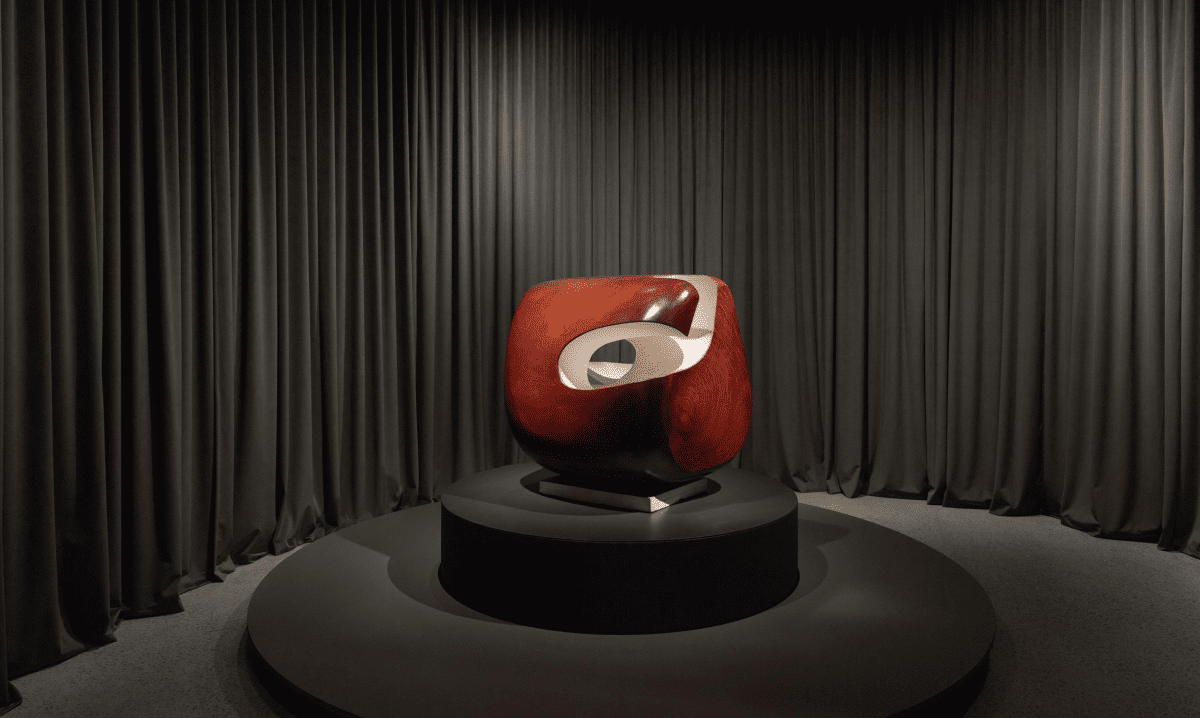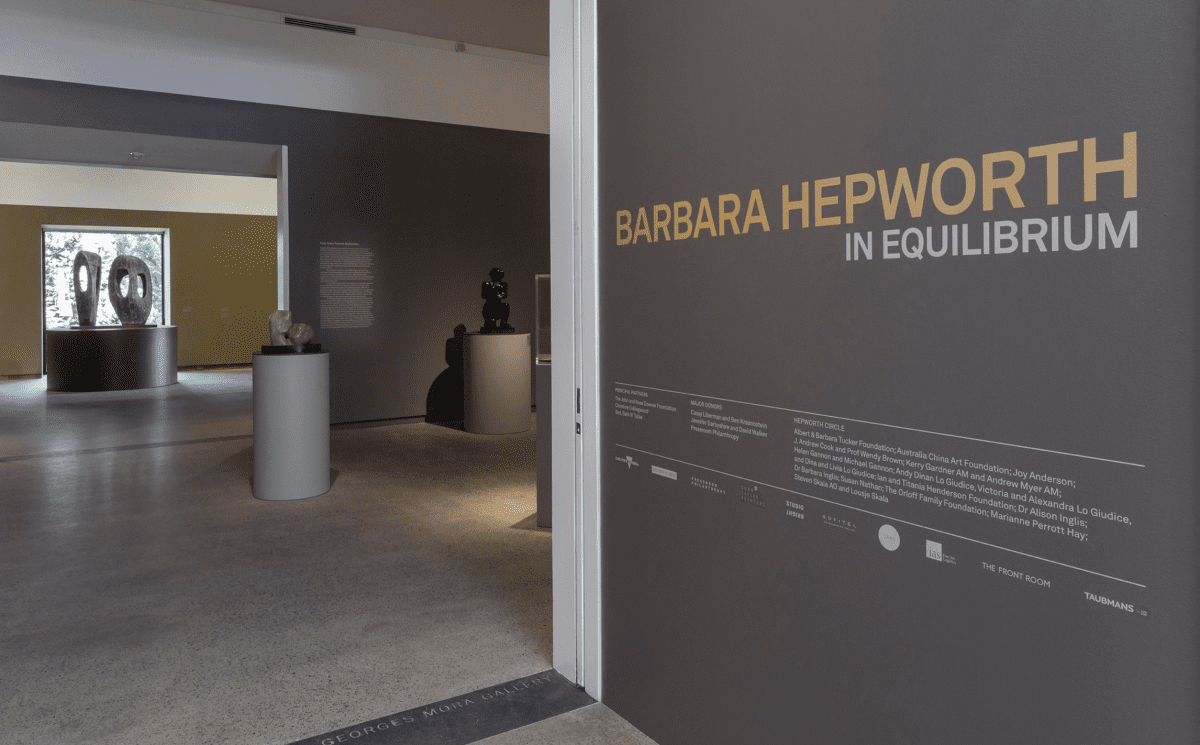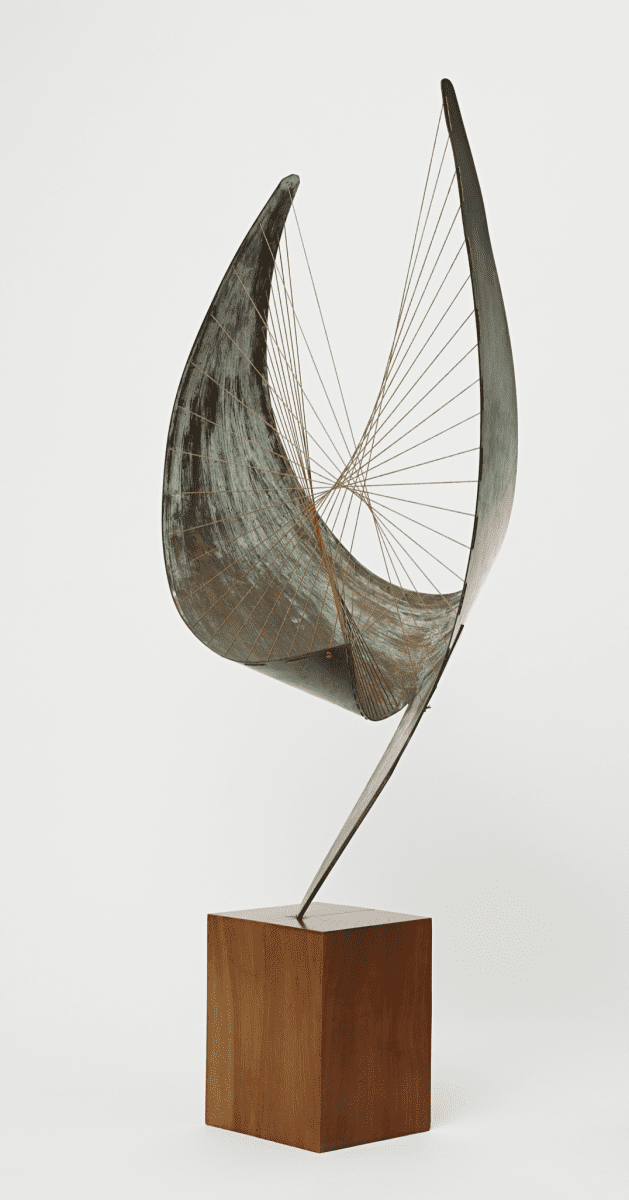
Material curiosities: Primavera 2025
In its 34th year, Primavera—the Museum of Contemporary Art Australia’s annual survey of Australian artists 35 and under—might be about to age out of itself, but with age it seems, comes wisdom and perspective.






Considered one of the most important artists of the 20th century, British artist Barbara Hepworth is also one of the few women artists to achieve international recognition during their lifetime. Focused on figurative and naturalistic forms made from stone, wood, metal and bronze, Hepworth’s sculptural work is deeply influenced by nature, with the gentle curvatures of her polished forms often resembling nautilus shells and smooth river rocks.
In Equilibrium features such forms and is the first major survey exhibition of Hepworth’s work in Australia; its title alludes to Hepworth’s ability to meld empty space with solid form, texture and colour to create a unified whole. Heide Museum of Modern Art artistic director, Lesley Harding, points out Hepworth “made a number of artistic innovations, but we should draw particular attention to her unprecedented ‘piercing’ of the threedimensional form in 1932, an invention often incorrectly ascribed to her associate Henry Moore”. Moore and Hepworth were close friends and worked as sculptors in the same time period. Moore often purported he was the first to use the pierced form in 1932, yet Hepworth had already been experimenting with the technique at least 12 months earlier. With this innovation, “space could be a form itself in sculpture, and give meaning to the idea of absence”.
While she travelled regularly, Hepworth spent much of her life in Cornwall, England, following the turn of seasons and observing the cyclical ebb and flow of the rugged coastal landscape. Located near her home were groups of Neolithic standing stones—huge ancient relics imbued with mystery and a sense of magic.
Expanding on these influences, curator Kendrah Morgan says, “Many of Hepworth’s sculptures have a talismanic quality and psychological power that draws you in. She had a fundamentally humanist, even spiritual vision, and although her work is abstract, it is very accessible because it is underpinned by an exploration of human relationships, and the relationship of the human figure to the landscape and the cosmos.”
In Equilibrium
Barbara Hepworth
Heide Museum of Modern Art
Until 13 March
This article was originally published in the January/February 2022 print edition of Art Guide Australia.